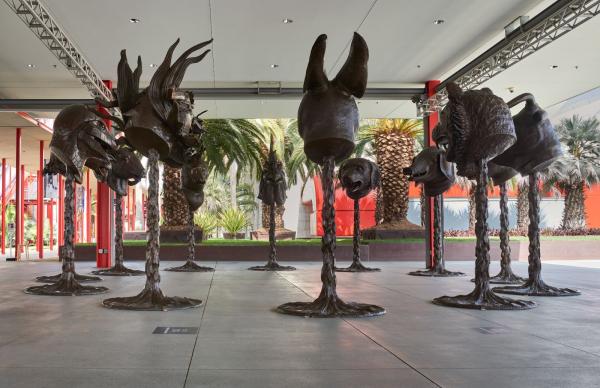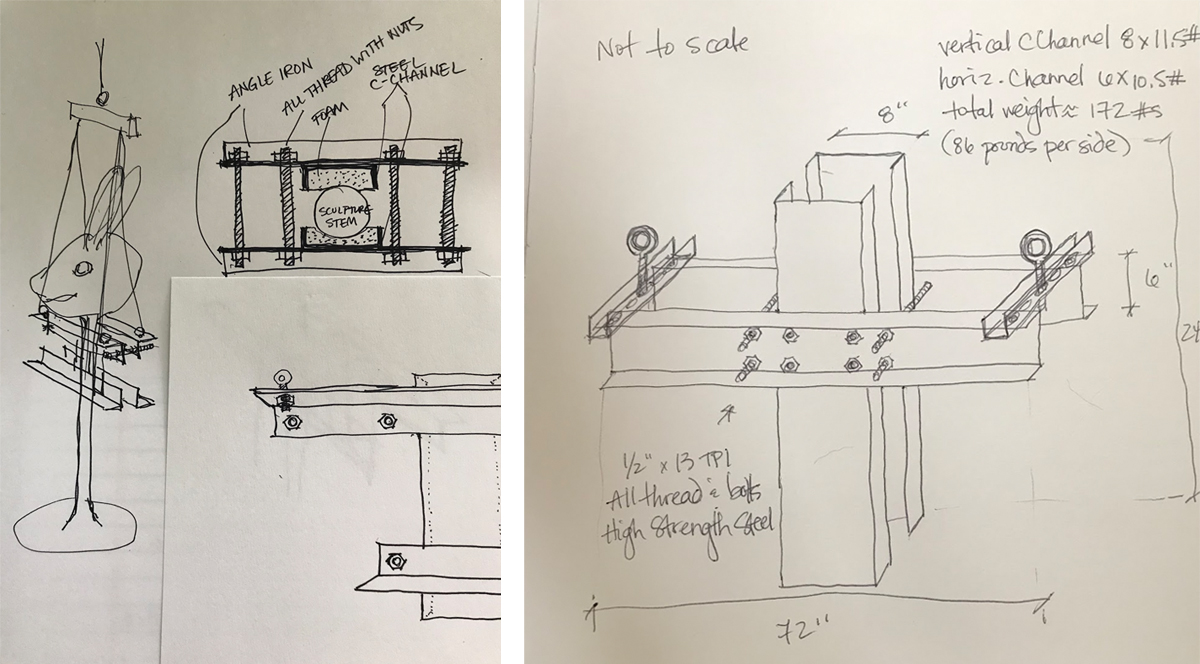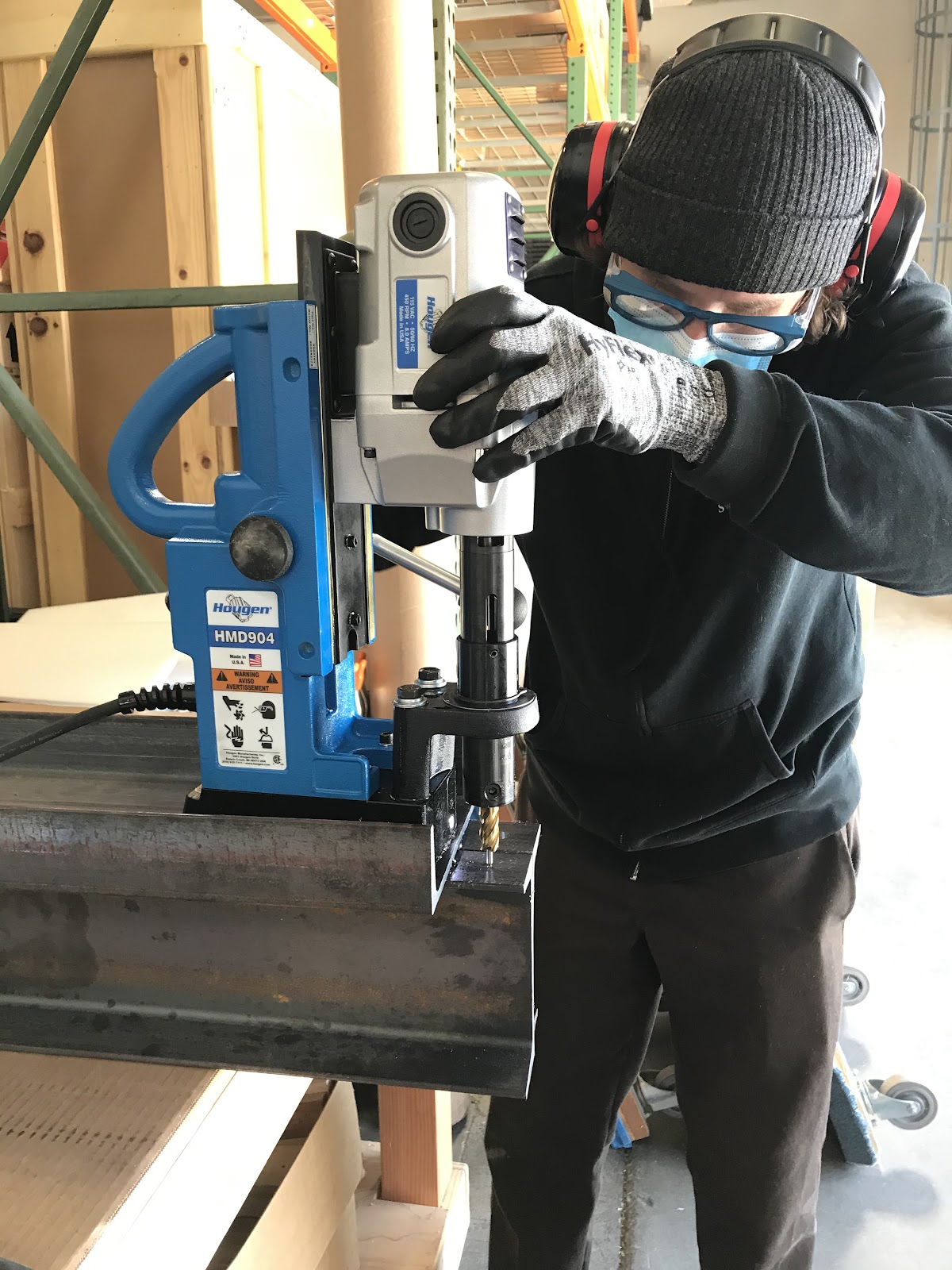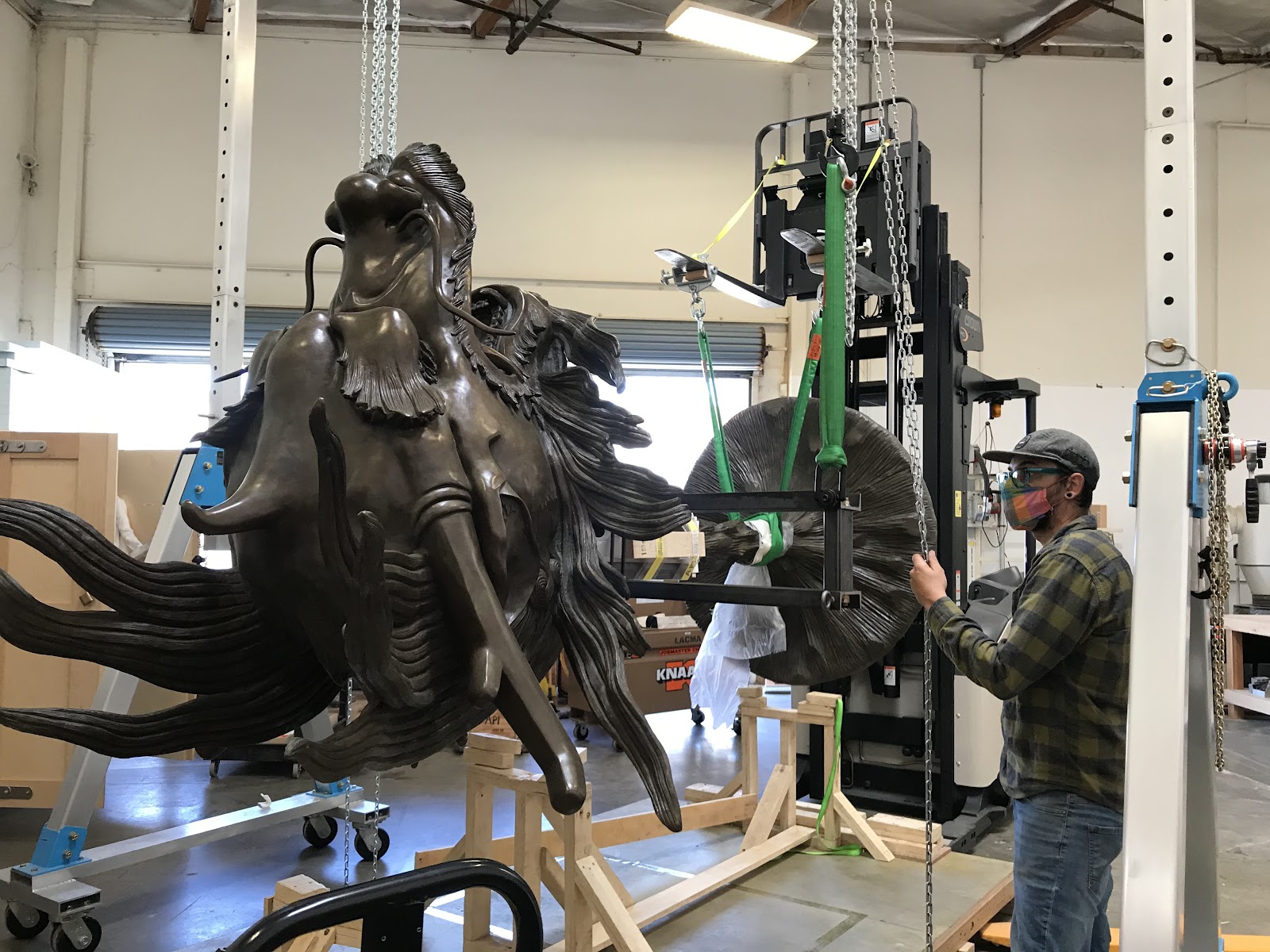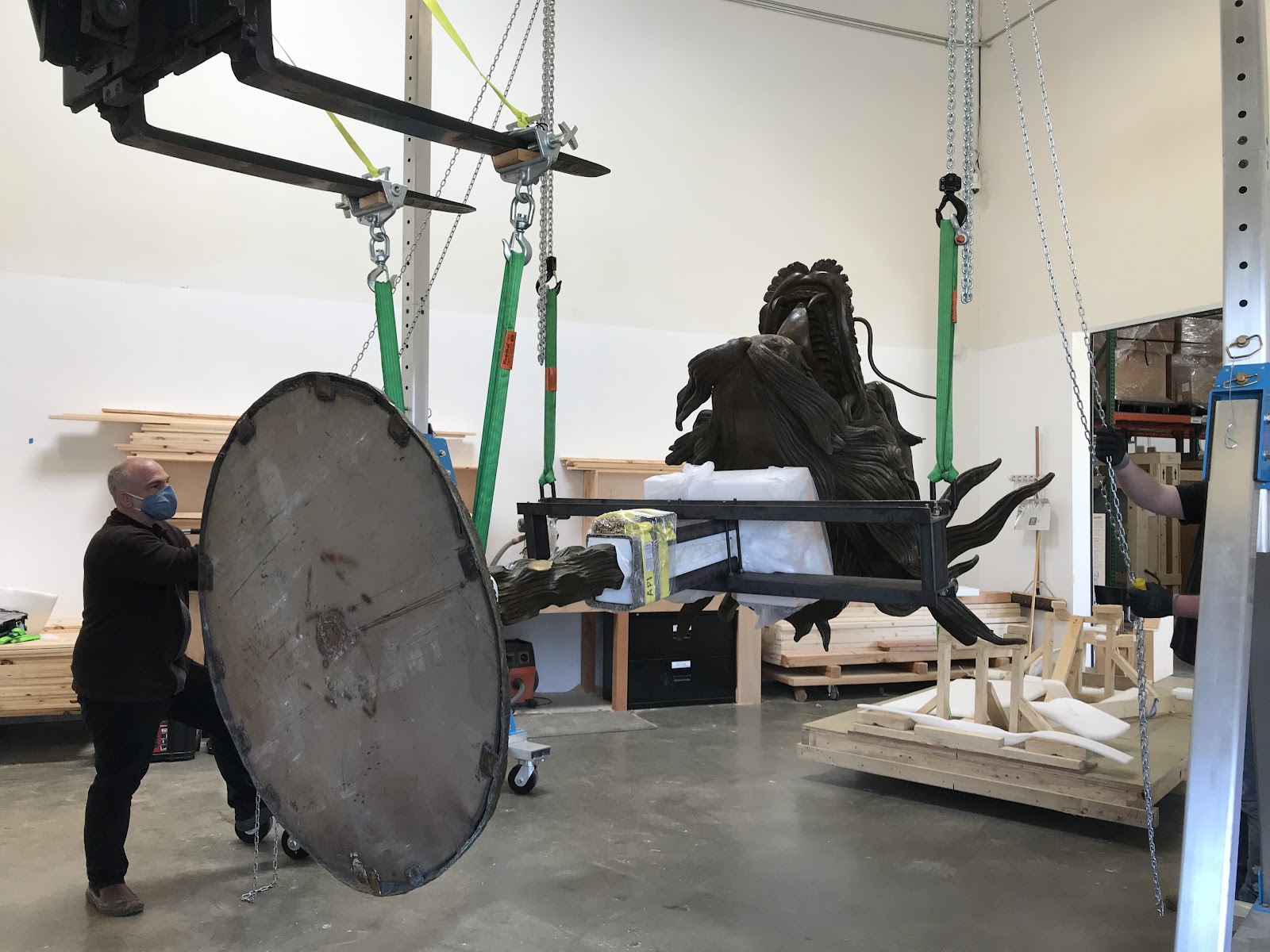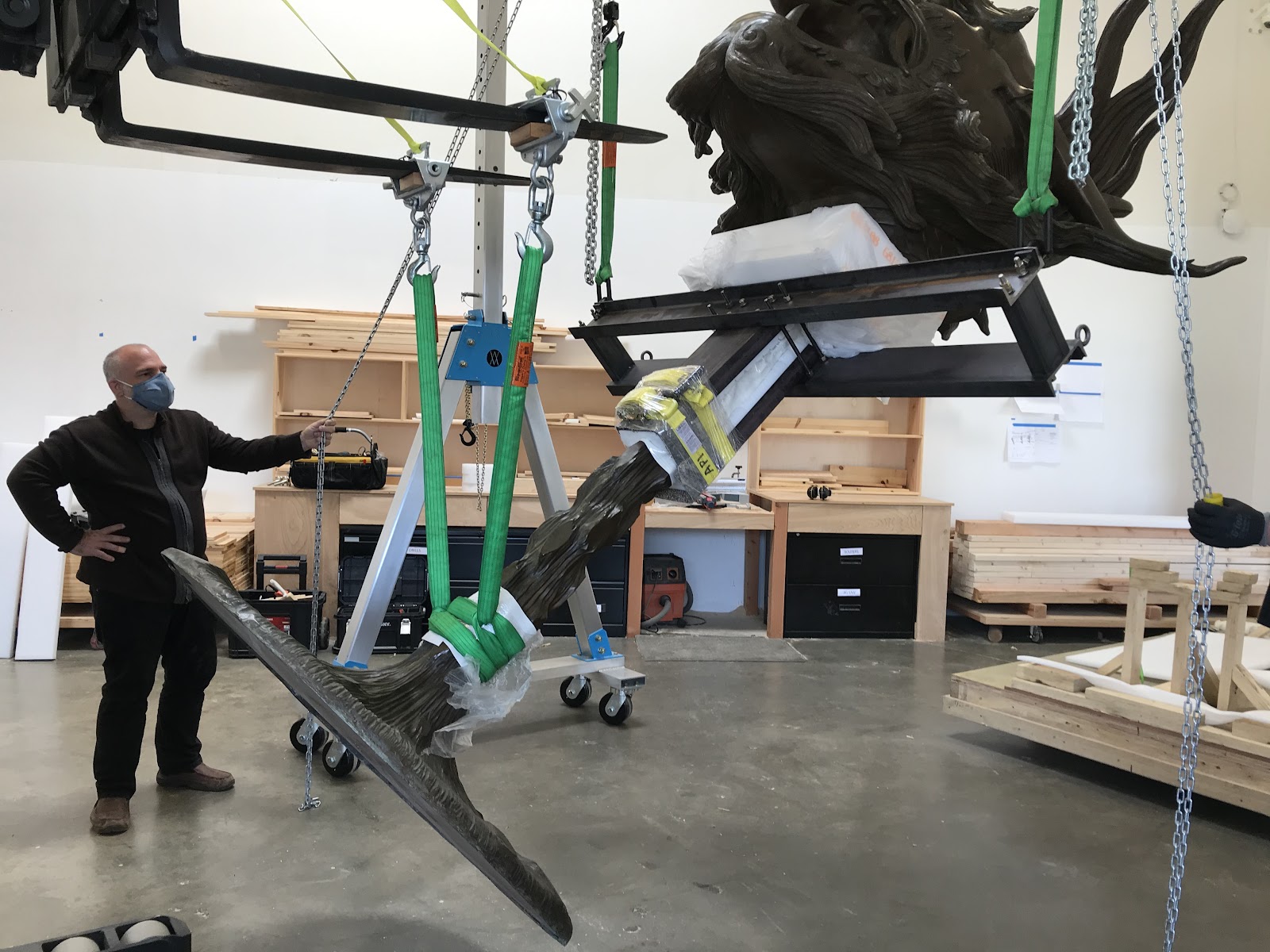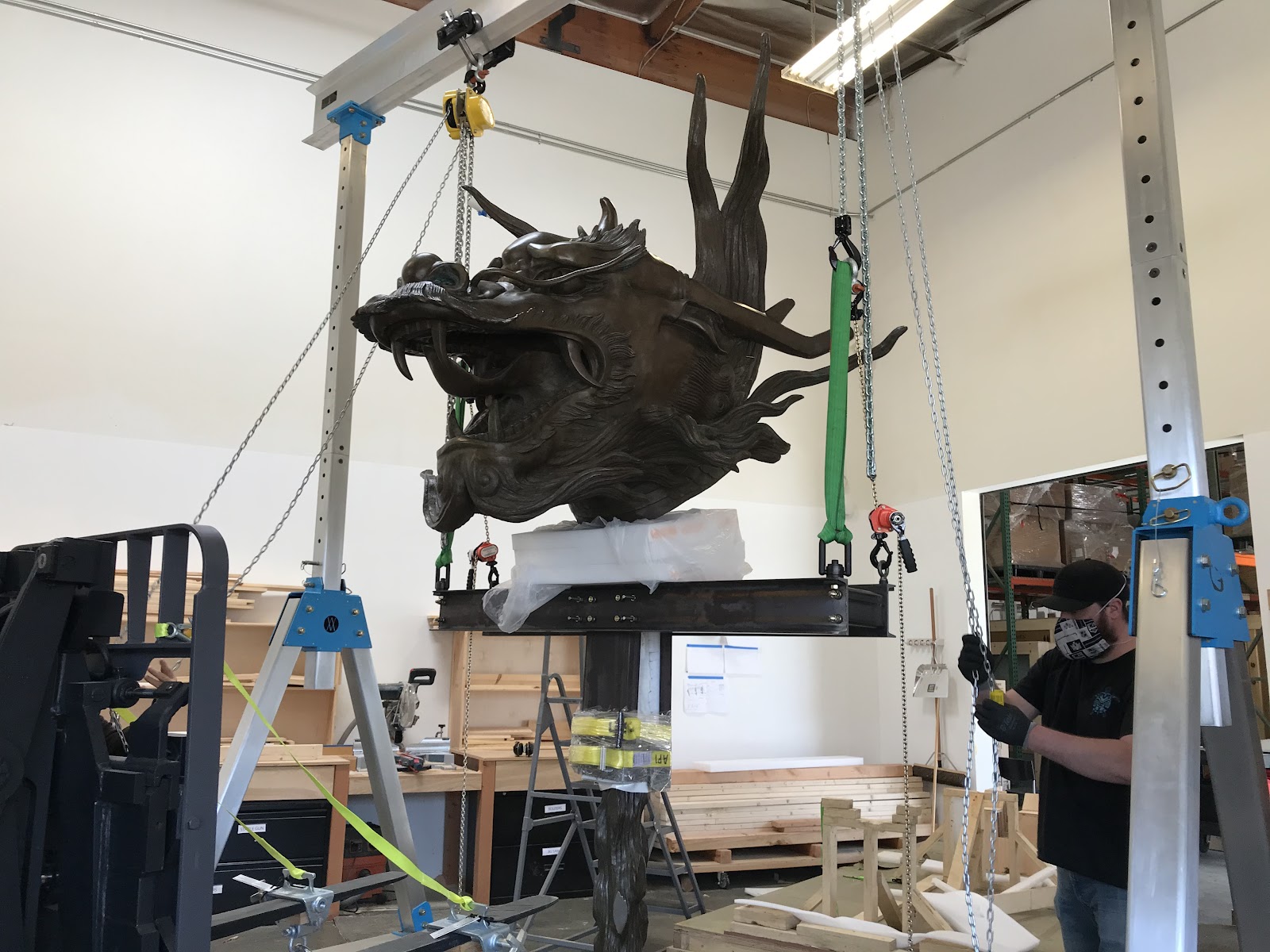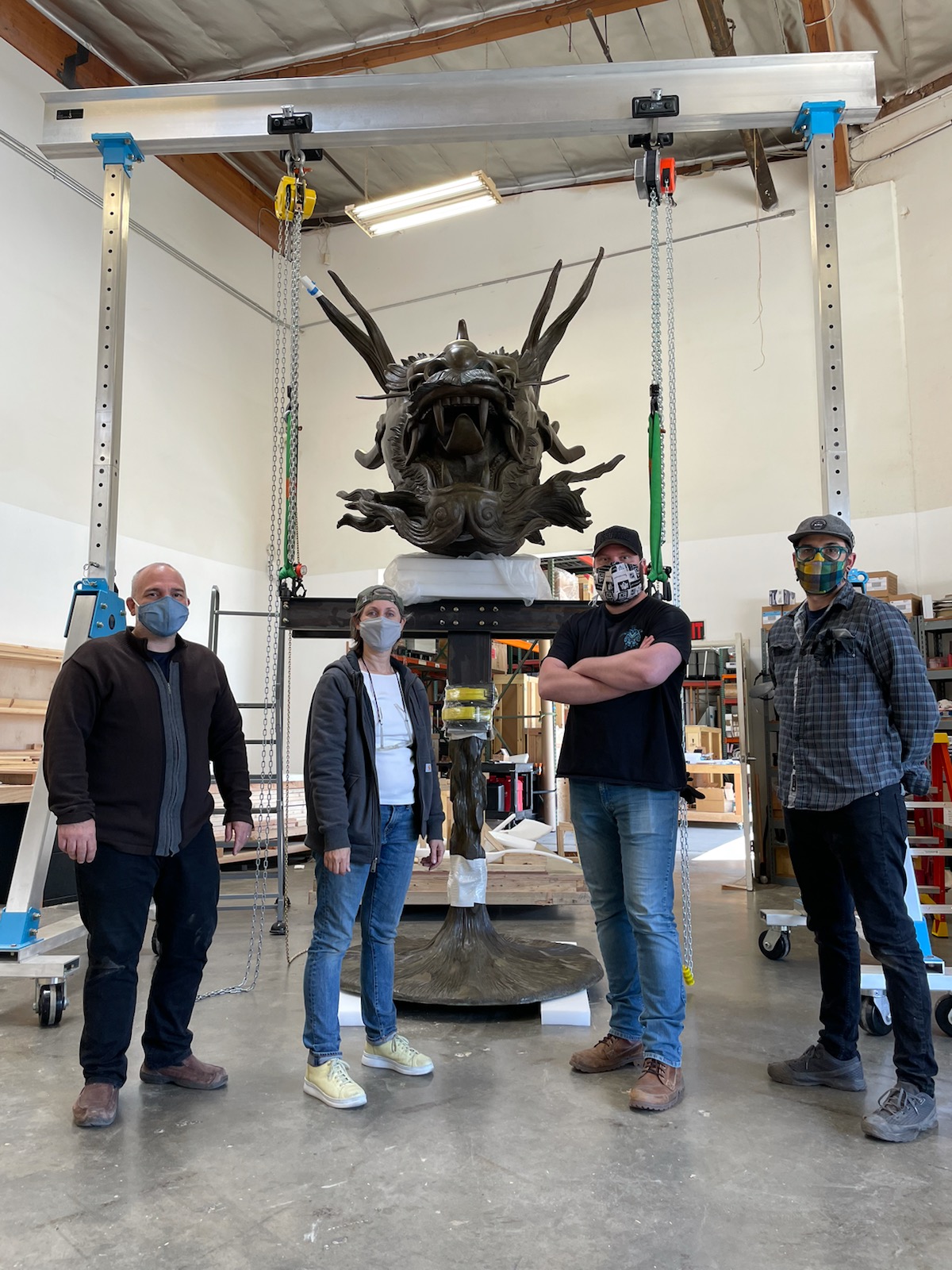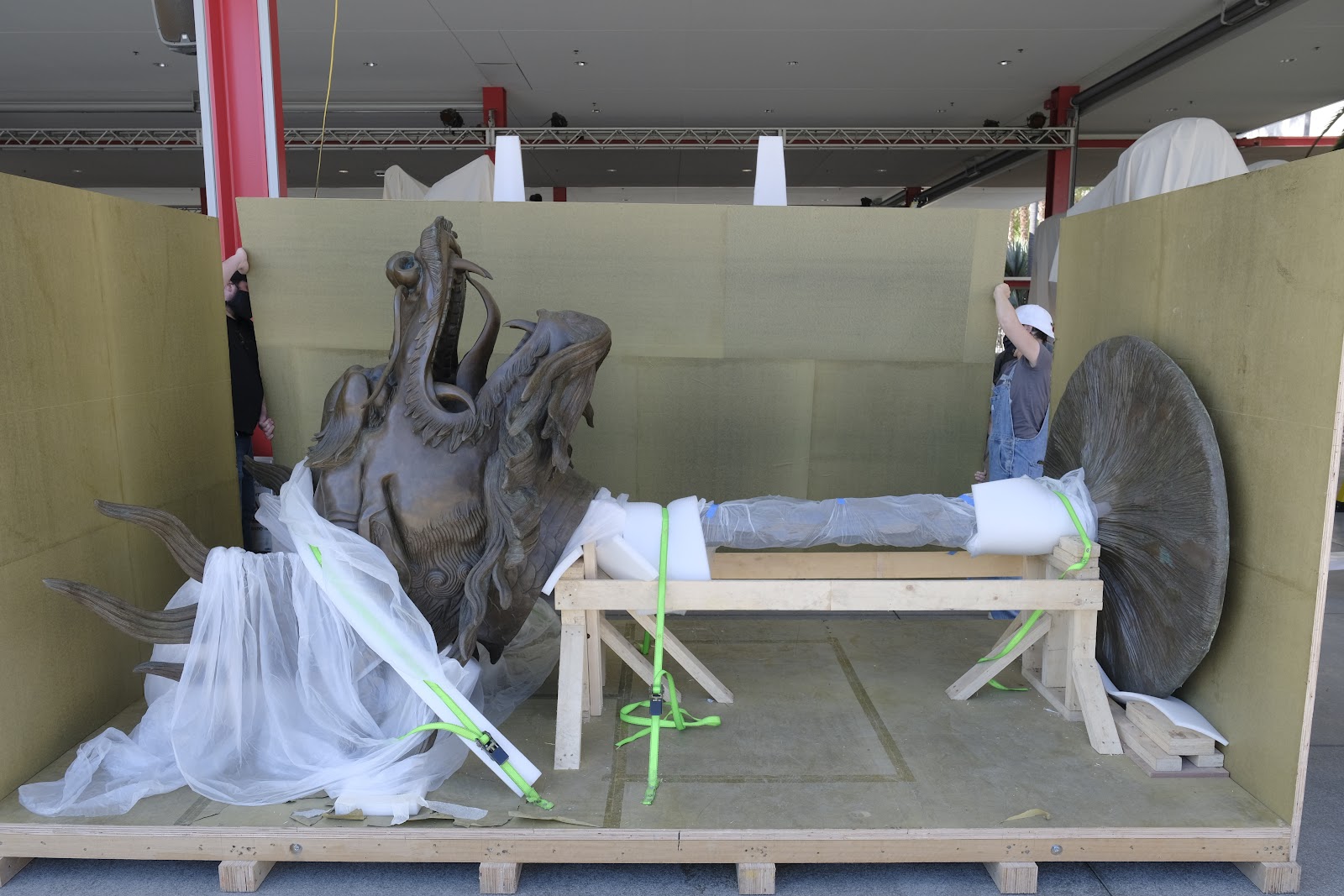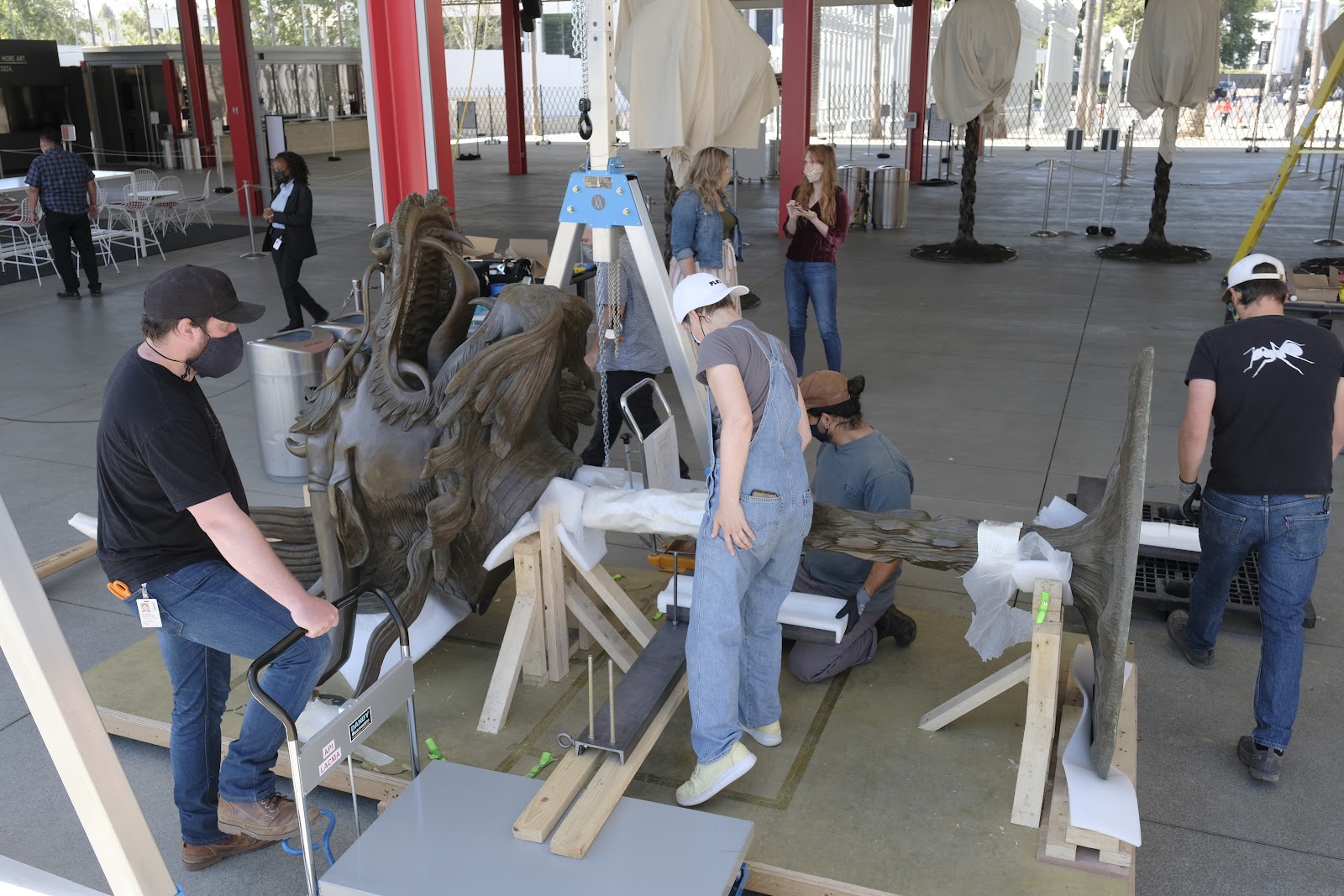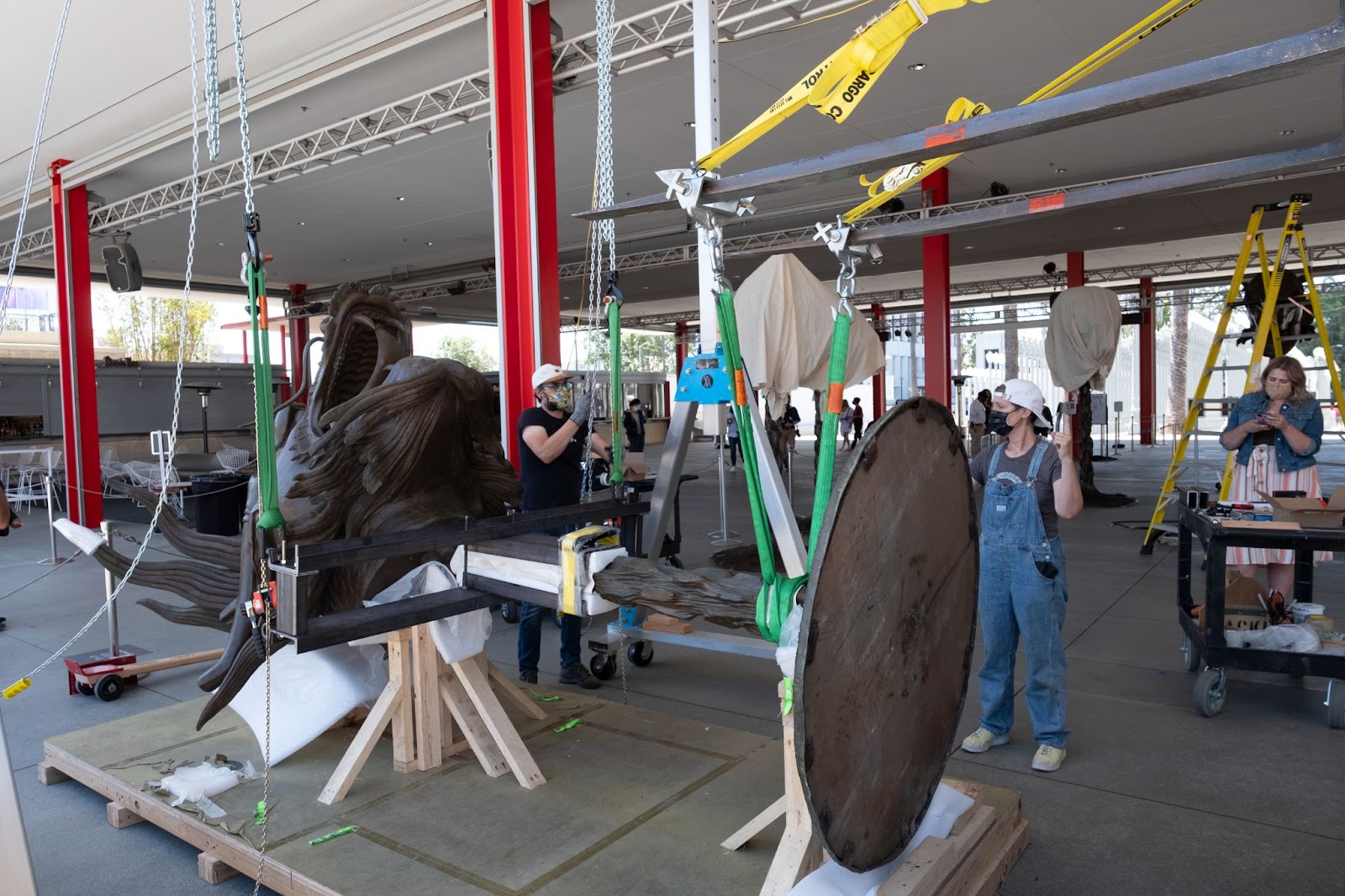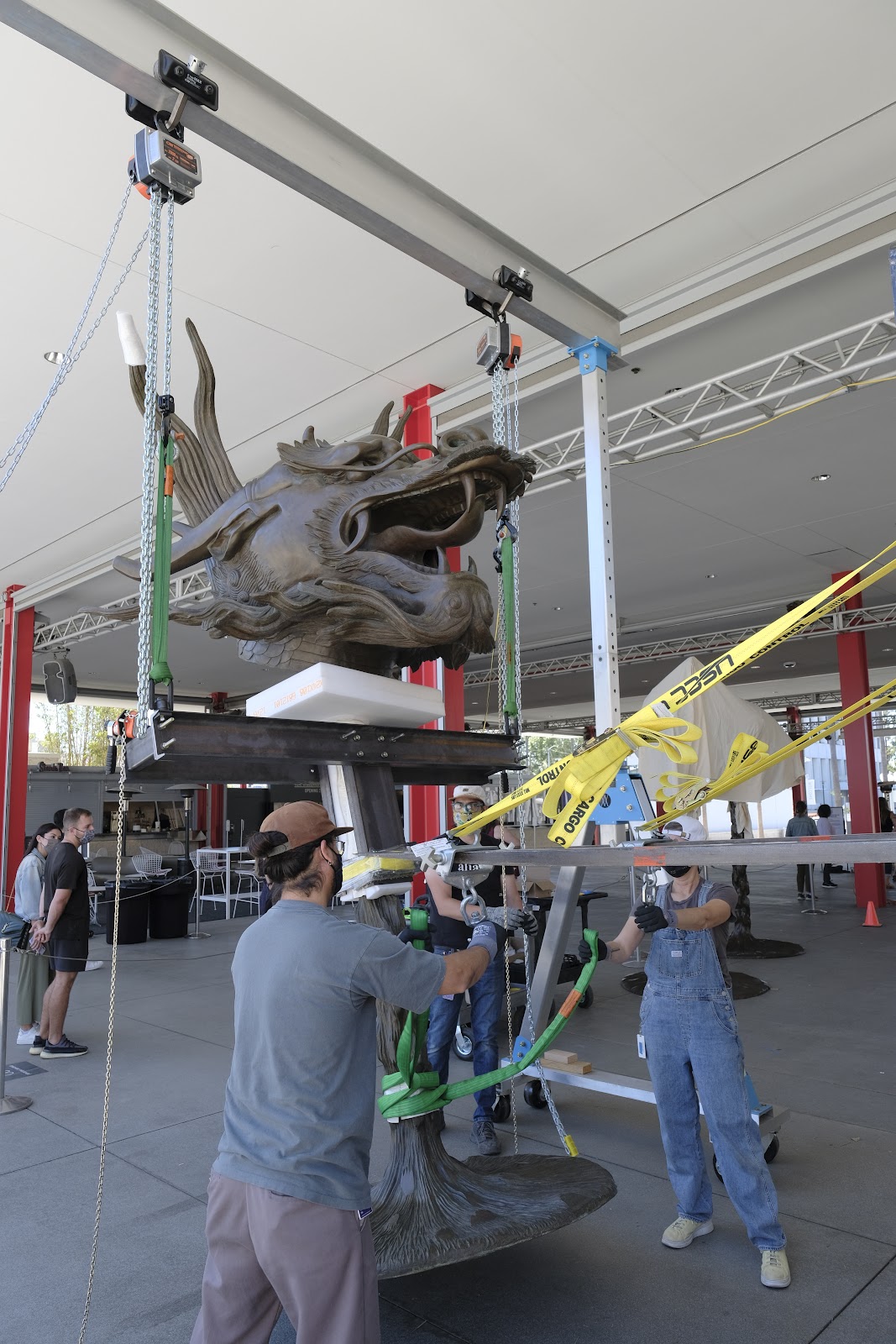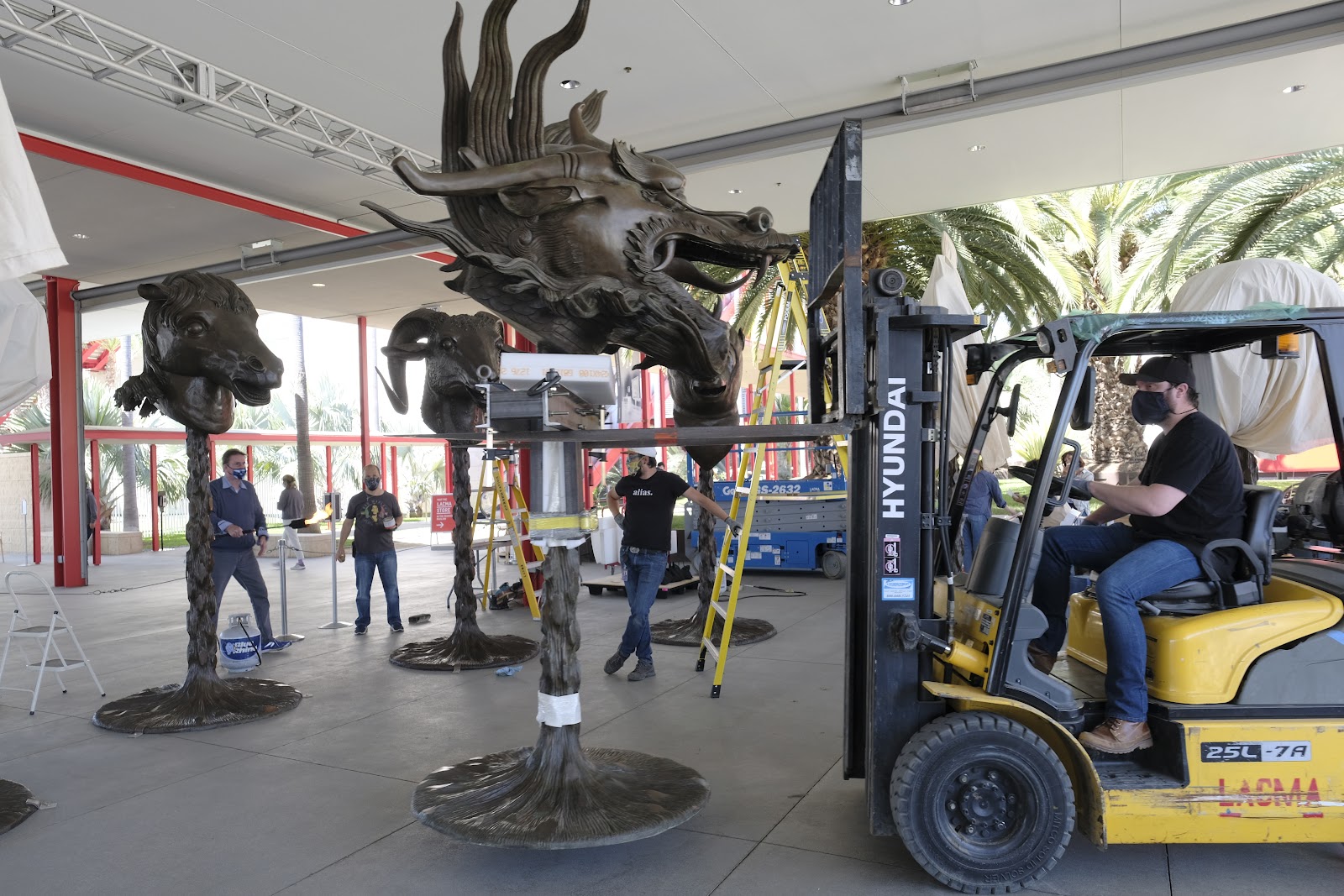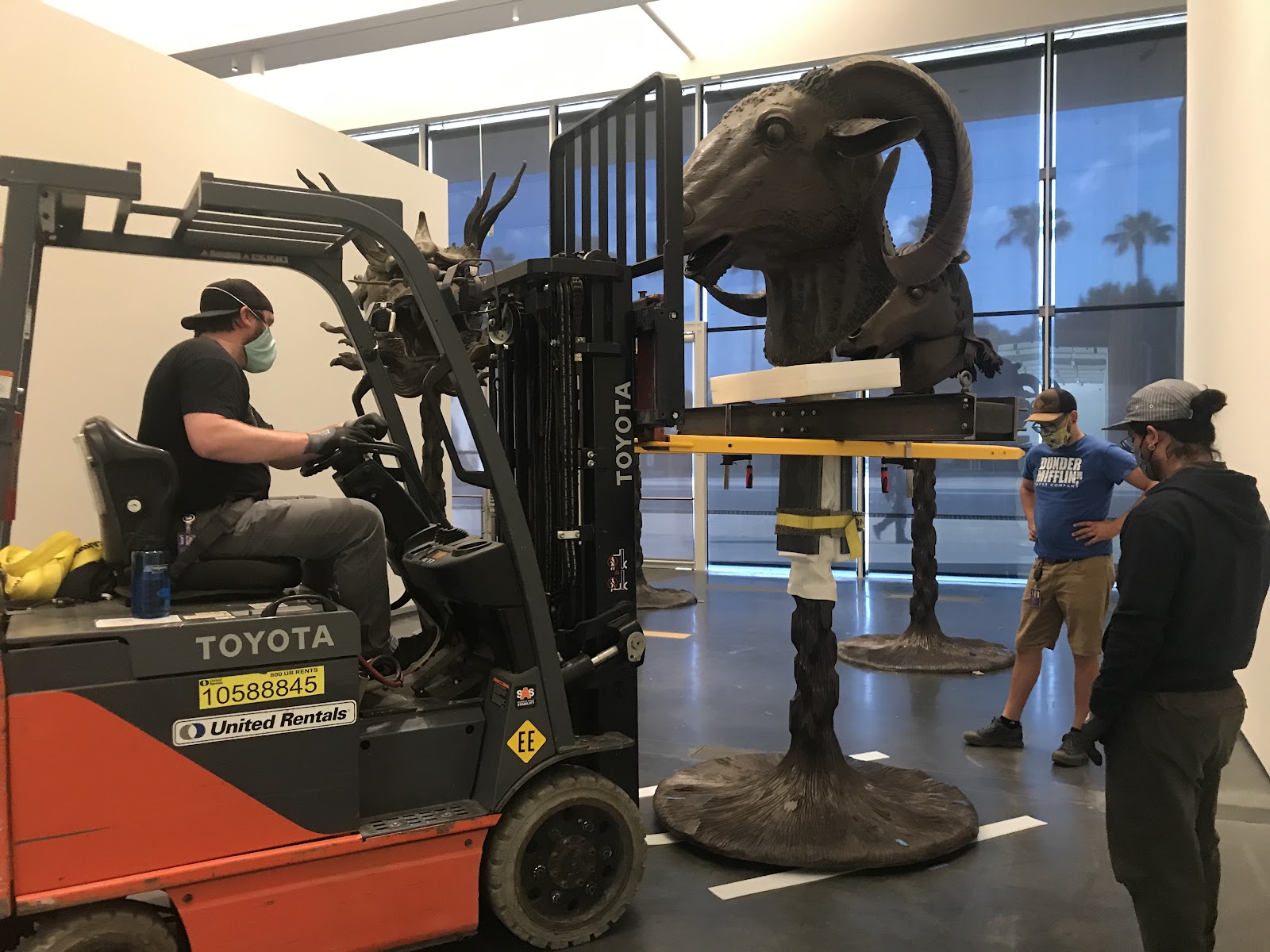Ai Weiwei’s iconic Circle of Animals/Zodiac Heads (2010), which was included in the exhibition Legacies of Exchange: Chinese Contemporary Art from the Yuz Foundation, posed significant challenges to move and install. For the exhibition, which was on view at LACMA from July 4, 2021, to March 13, 2022, the sculpture was initially installed outdoors on the Smidt Welcome Plaza for conservation treatment and a hot wax coating, then made its way into the galleries. It was then moved back outdoors to the Zev Yaroslavsky Plaza, where it is currently on view.
In preparation for Legacies of Exchange, we designed and fabricated a lifting fixture to safely handle Circle of Animals/Zodiac Heads. The artwork consists of 12 separate heads of the animals of the Chinese zodiac. They are made of cast bronze, range from 10–12 feet tall, and each weigh between 1,000 to 2,000 pounds (or a half ton to one ton). The pieces travel laying down because of their height—the crates would be too tall to fit into a truck or airplane.
Though these objects can be and have been installed without a lifting fixture using slings, there were several reasons to use a fixture to upright, move, and install them. The patina on the bronze is very thin, and the repeated use of slings in the same configuration could wear through it. The slings were typically arranged in chokeholds around the stems under the heads, and the sharp edge of the base of some of the heads, plus the extreme sling angle, put the slings at risk of being damaged or having their capacity exceeded. We also lacked the headroom under the canopy on the plaza for a crane. Since the work would become a part of our permanent collection, the small investment to design and fabricate the lifting fixture made sense, especially because we would be installing them three times within one year.
The lifting fixture would need to be able to handle all 12 of the zodiac heads. It needed to be easy to handle and attach. It needed to keep the pick points above the center of gravity for each head, and prevent slings from getting entangled around ears, horns, or dragon flames. We also needed to consider the tools and space we had available for fabrication. In considering these things, I came up with a basic concept using mild steel vertical C-channels (these are structural steel lengths shaped like the letter “C” when viewed from the ends) and foam to gently squeeze the stem, with additional horizontal pieces of C-channels to move the pick points away from the animal heads.
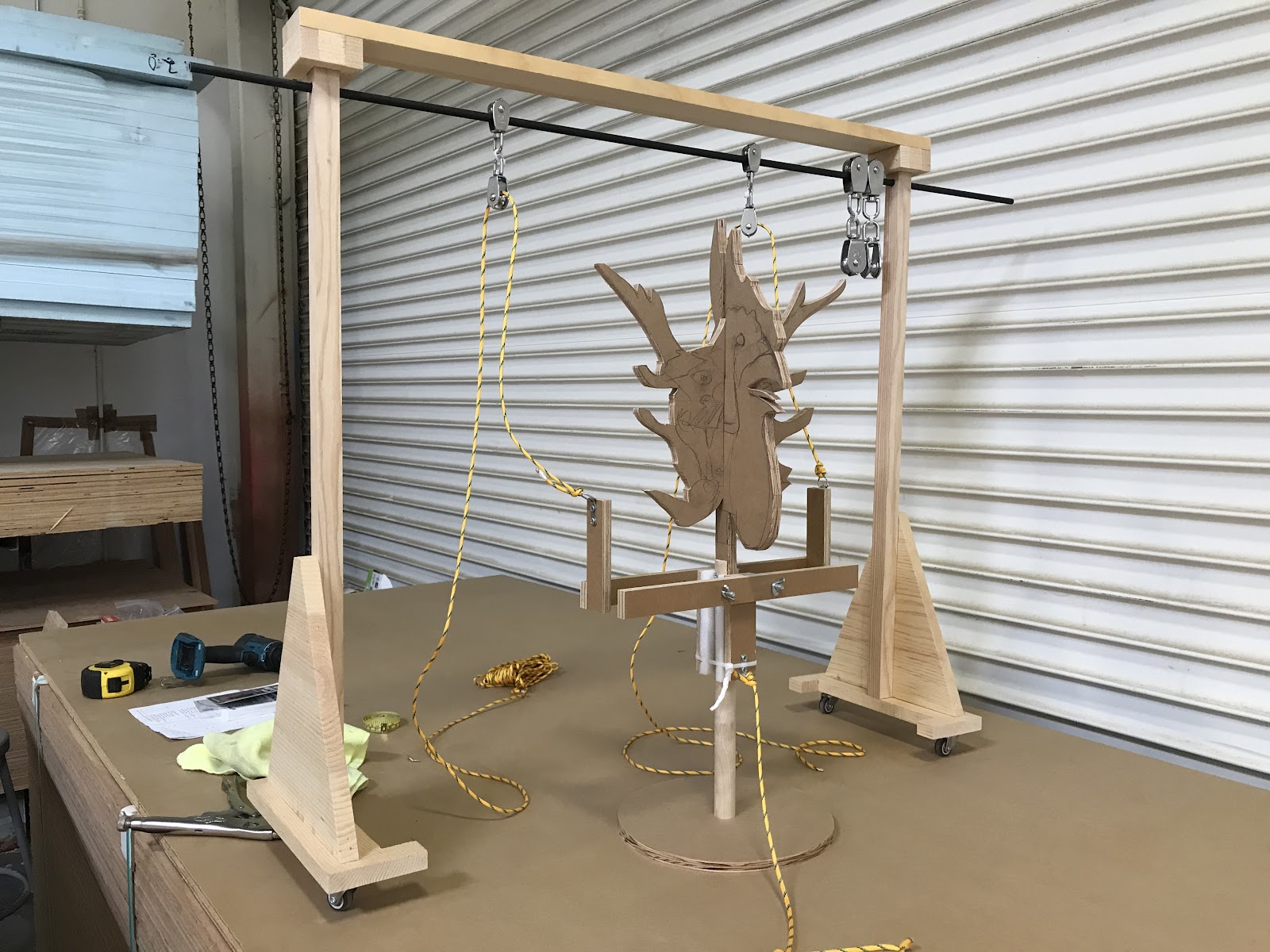
We decided to fabricate the fixture in-house, so we could make modifications as we tested it. We drilled and bolted the C-channels for each side of the fixture together, as the art preparators and collections management teams don’t have welding equipment or space.
After testing several types of padding and barrier materials on the stem, we settled on using thin neoprene rubber sheet to increase friction, with ethafoam plank filling the vertical channels. The foam gets squeezed on compression and fills in around the bumpy shapes of the stem, gripping the stem. The front and back halves of the lifting fixture are pulled together around the stem using threaded rods and a ratchet strap. The compressive load is spread out over the 24-inch height of the fixture to increase friction and decrease point load on the hollow stem.
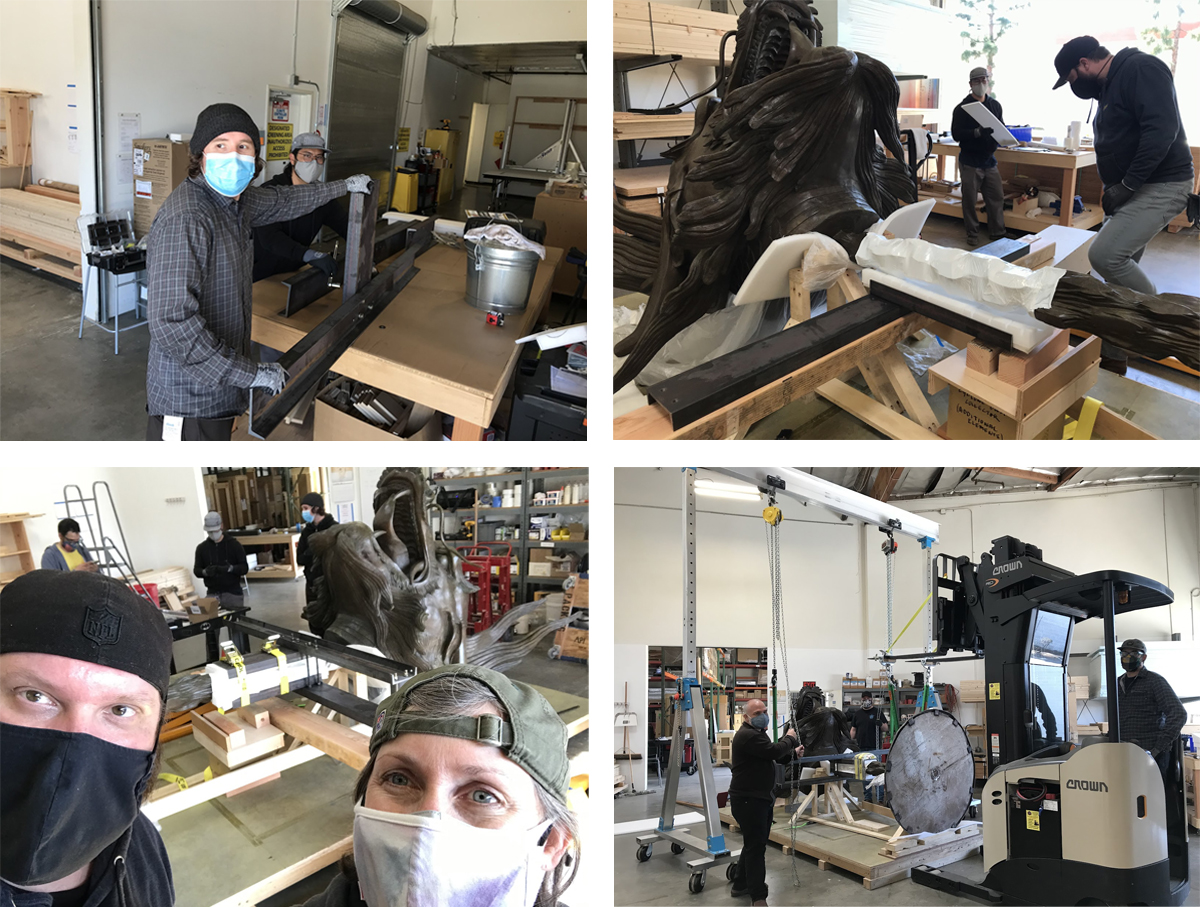
Over a couple of days, we tested different combinations of foam, different sizes of spacers at the ends of the fixture, and different amounts of compression to fine-tune the methods, materials, and tools we would use. Testing the process on the dragon, which is the heaviest and widest of the zodiac heads, gave us confidence that the method would work on all 12 animals.
We raised the sculpture off the crate pallet with the forklift at the base and using two chain falls on the gantry, one on each side of the lifting fixture.
Once the sculpture was in the air, we moved the crate pallet out of the way and began to upright the sculpture.
We then raised both ends of the sculpture, then began lowering the base, with Mike driving the forklift forward as he lowered the base until all the weight was hanging from the gantry.
We then attached two small lever hoists between the chain fall hooks and eyebolts at the back of the lifting fixture to pull the piece into plumb before setting it down gently on the floor.
During the testing phase, we established the process for unpacking, uprighting, moving, and installing each animal head. With each piece we installed, we further streamlined the process. Here are a few glimpses at the installation of the dragon on the Smidt Welcome Plaza:
To move the animal heads from the plaza to the gallery during Legacies of Exchange, we reattached the lifting fixture to each head, enabling us to pick up the sculptures with the forklift for greater control. This way we could keep them in their vertical orientation and still get through the door into the Resnick Pavilion.
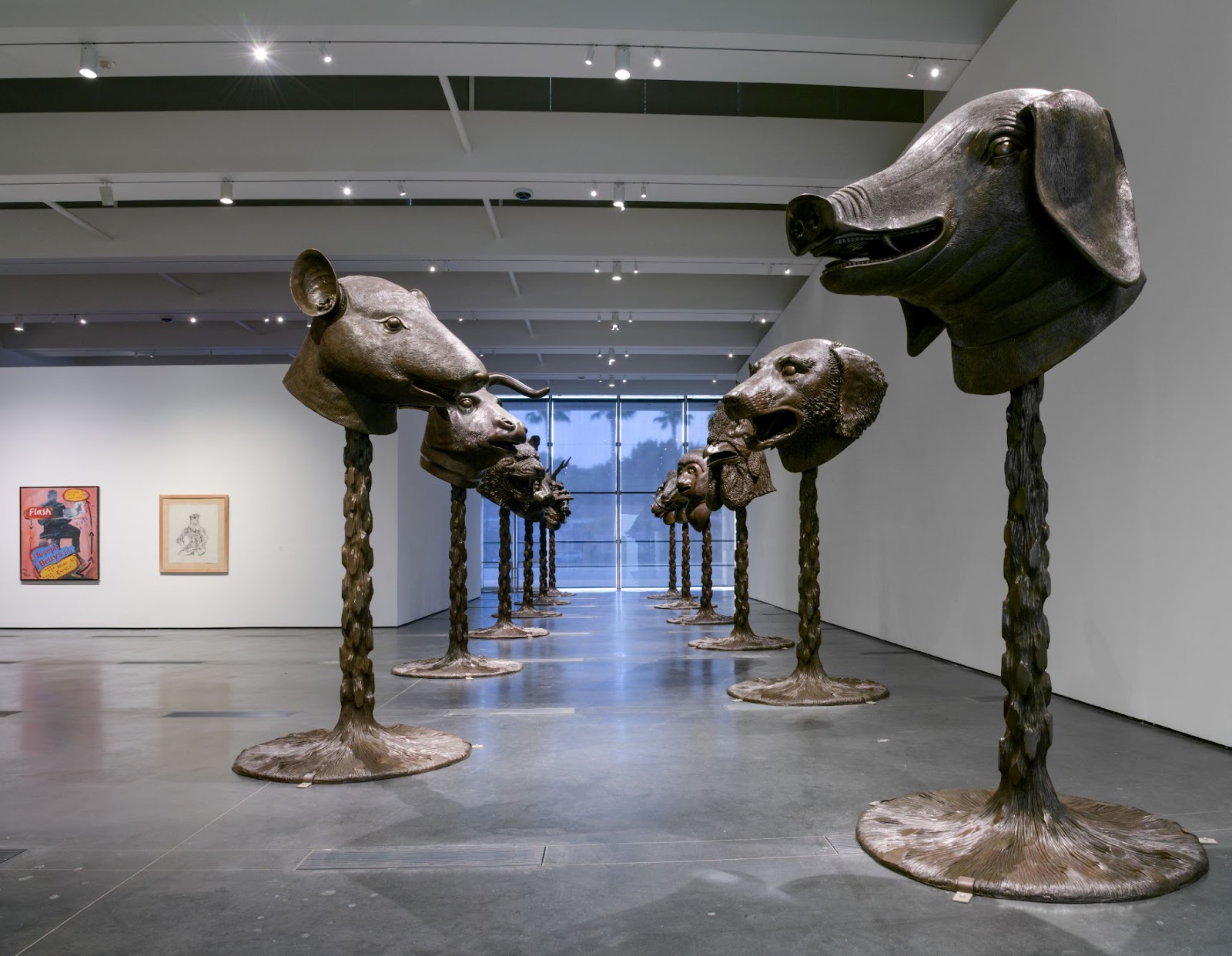
You can see Ai Weiwei’s Circle of Animals/Zodiac Heads now on view on the Zev Yaroslavsky Plaza.



